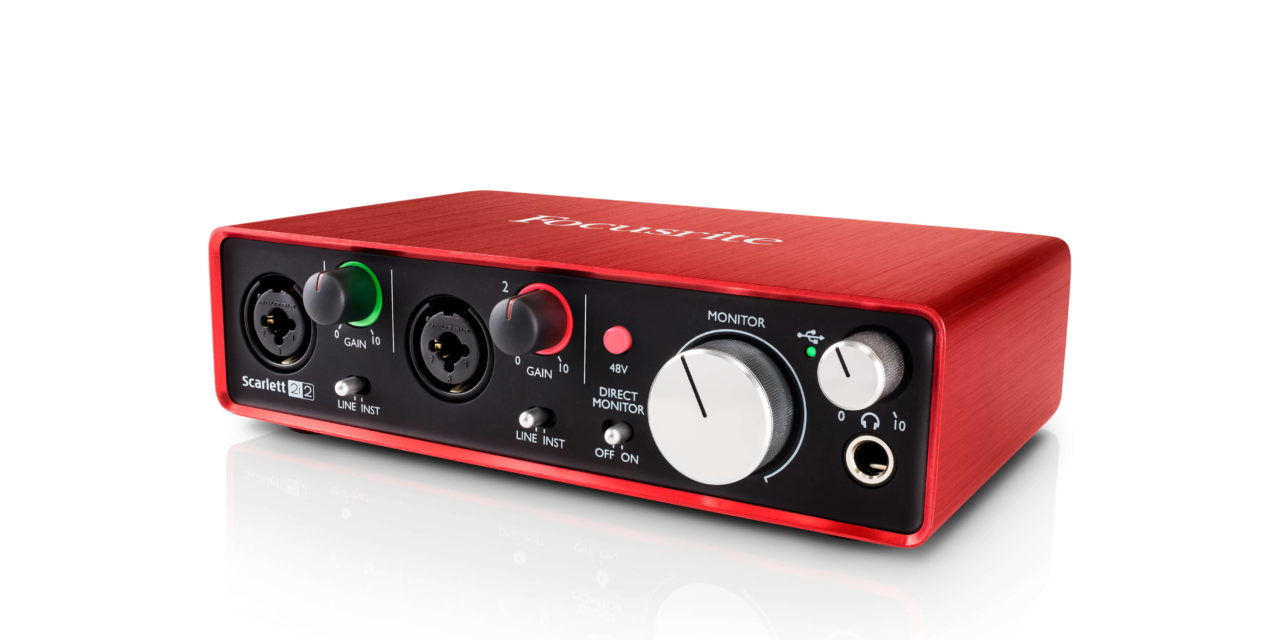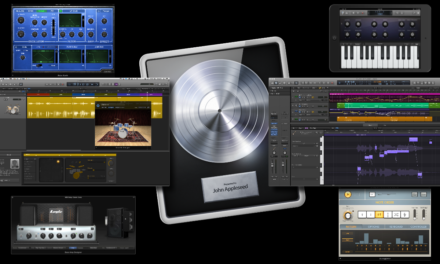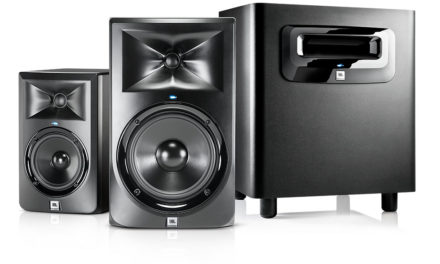Now that computer hardware prices have fallen, home studios are rising in popularity. These domestic set-ups can produce amazing sounds that would have required lots of dollars to pull through. What makes all this possible is an excellent audio interface. Options for the device are on the rise, making it difficult to choose the right one.
Here is a guide and a review of the 5 best audio interfaces you should consider.
5 Best Audio Interfaces For Your Home Studio
What is an Audio Interface and Why Do You Need One?
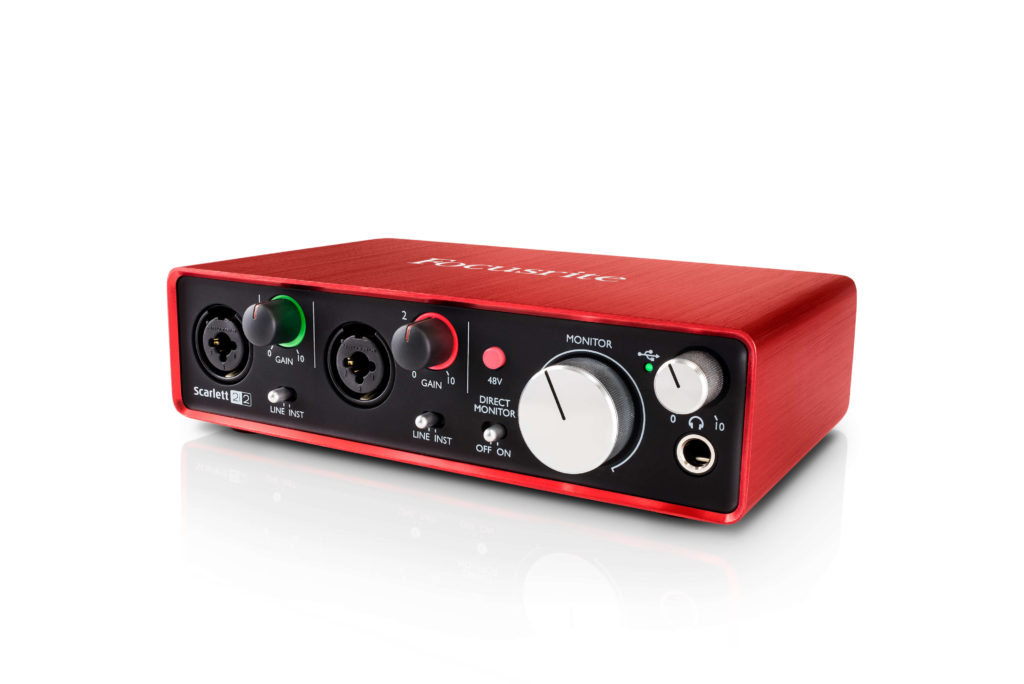 Have you ever wondered how you can record your voice, guitar, and master keyboard among other things? The answer is an audio interface. It is a device that enables you to get good quality sound in and out of gadgets like the PC, laptop, and iPad among others. An audio interface allows you to manage the recordings after you are done. In short, it is a device that connects the gear in your studio to a digital audio workstation in your device.
Have you ever wondered how you can record your voice, guitar, and master keyboard among other things? The answer is an audio interface. It is a device that enables you to get good quality sound in and out of gadgets like the PC, laptop, and iPad among others. An audio interface allows you to manage the recordings after you are done. In short, it is a device that connects the gear in your studio to a digital audio workstation in your device.
So, why do you need an audio interface? Most of the time when you record audio using your laptop, computer, or iPad, there is lots of latency. This is as a result of their inbuilt conventional audio device. What this means is that the time it takes for the digital audio signal to be processed is long.
For example, if you plugged a microphone lead without an audio interface to the laptop’s port, the analog electrical signal created will be processed to a digital signal for the DAW to understand. In live monitoring, that is, if you want to listen to the audio again, the conversion is reversed – converted again. This is to enable the sound to be played by speakers or headphones and other monitors. Having an audio interface reduces or eliminates this delay, and this is why you need one for your studio.
What to Consider When Looking For an Audio Interface
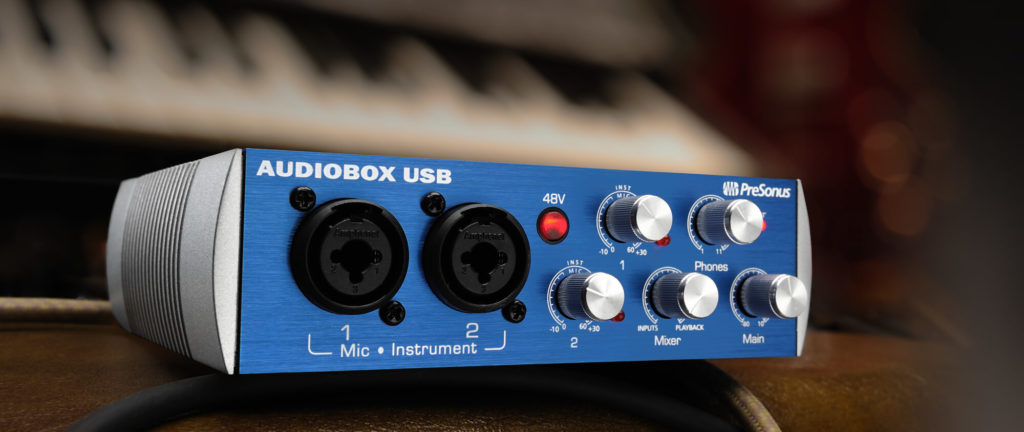
Number of Inputs and Outputs
The number of inputs in the audio interface you buy is essential. How many inputs and outputs do you need? If you are not planning to do any simultaneous recording, you won’t need many of them. It all depends on what you need to send to and from the computer. For the best recording experience, ensure that the audio interface has microphone inputs, inputs for instruments like guitars and line ins and outs – these are multipurpose and can be used for keyboards, amplified microphones among others.
Also, put into account digital connectivity and headphones. Many interfaces offer sockets for the two. Overestimating the number of input that you require for a recording project is easy, but there will be no achievement or successful recording if one crucial input or output is missing.
Genre of Music
The genre of music, to some extent, also affects the choice of an audio interface. For instance, if you are recording types of music that require the use of drum kits, like rock, you had better choose an audio interface that has many inputs. Typically, drum kits require at least eight inputs. This way, you will be able to record with utmost clarity and effective control.
If you are a band, a singer, electronic, or you just want to do a solo recording, factor everything in before making the purchase of a specific audio interface.
Connectivity
This refers to the device connectivity that you need. Nowadays, because of the many smart devices available, the type of connectivity is critical to ensure that work progresses smoothly. Some of the connections include:
• USB – Most computers currently come with either USB 2.0 or USB 3.0 ports. Similarly, interfaces have been designed to work with USBs to power from the computer or any other device connected. This is why they make the best mobile recording rigs. iOS-enabled devices, particularly connect to audio interfaces using USB, at least most of them. Here is how to know if you have USB 2 or 3.
• FireWire – This is primarily intended for connection with Apple gear, which makes them popular in Mac computers. It enhances fast recording, which is consistent and is ideal for recording with several channels.
• Thunderbolt – This Intel technology is the new high-bandwidth, which current Mac computers come with. PCs can also use them if Thunderbolt option cards are equipped. The transfer rate is amazing, and the latency is incredibly low for computer recordings.
• PCI Express (PCIe) – This is found on desktop computers and are directly plugged into the motherboard. Some computers lack PCI Express ports even though this connectivity offers high bandwidth and low latency. With them, you can handle several simultaneous inputs and outputs.
Preamps
Preamps are also known by many as ‘mic pre,’ and it refers to the microphone preamplifier. Anything that amplifies sound means it elevates it, which is why preamps elevate the negligible or small signals for a microphone up to the appropriate level ideal for recording. Without a preamp input in an audio interface, it will be difficult for you to do good projects using a microphone.
The quality of the preamps in your audio interface and drastically affect the production of your sound.
Analog to Digital Converters
Also denoted as A/D conversion, it refers to the conversion of sound from analog to a digital number that represents amplitude and time. In reverse, we have D/A, that is, sending back the signal to output devices like headphones or speakers, which are the analog sounds.
An audio interface with inappropriate A/D conversion may cause noise distortion and latency. It is crucial to consider a product with low distortion, excellent dynamic range, and almost no noise at all. It will enable you to capture everything at high frequencies.
Phantom Power
This is one other thing to consider especially if you use a microphone for recording. Majority of condenser mics make use of external power to appropriately achieve good performance. Here is where the phantom power comes in. If your project or studio requires the use of a condenser microphone, ensure that the audio interface has provision for phantom power, at least in one channel. If you use a dynamic type of microphone, the power is unnecessary.
Bit Depth and Sample Rate
The conversion of your recordings is done in bits and bytes. In simple terms, the higher the bit’s number, the higher the fidelity levels in relation to the initial signal. Fidelity refers to the capture of the sound changes by the digital bitstream with noise elimination.
Audio CD has a standard 16-bit with a 96Db dynamic range. Using this range, however, some noise is evident. For better performance, using a 24-bit recording is ideal. It delivers a dynamic range of 144Db. This is good for the elimination of noise for more professional results.
Sample rate, away from the bit depth, refers to the number of times a sound is sampled to create a digital signal in a second. Once again, the higher the sample rate, the better the frequency range of the sounds. To record samples of about 22kHz, you have to use the standard sample rate, which is 44.1kHz.
While choosing an audio interface, one of the ways to compare them is using the sample rate. Professionals frequently work with 48kHz, 96kHz, or even 192kHz sampling rates. This is for commercial releases, but if you are working on something that you want to share with friends, the 44.1kHz is sufficient.
Included Software
The audio interface market is nowadays competitive, and manufacturers are coming up with new ways of ensuring their products are well received. This is why most have included software to make recording effortless. Some of the programs included are impeccable, for seamless and easy recording. Some of the popular software includes Ableton Live, Cubase, PreSonus Studio One and many more! This may influence the type of audio interface you are going to buy.
Portability
Many people who are on the move, like electronic musicians, need a setup, which is mobile. This enables them to carry their studios and their gigs wherever they go. How portable your audio interface is will come in handy most of the time. If your interface can be easily carried and connected to a laptop at a coffee shop without the need for extra power, then it is worth having.
Usability
This is occasionally ignored by many people unaware that it matters to a greater extent. How easy can you operate the audio interface? Do you have to go through a chain of twirls to get through a single encoder? It is essential to consider one with great features, one that is creative and doesn’t allow you to waste lots of time trying to manage or figure out how a program works.
Benefits of Using an Audio Interface
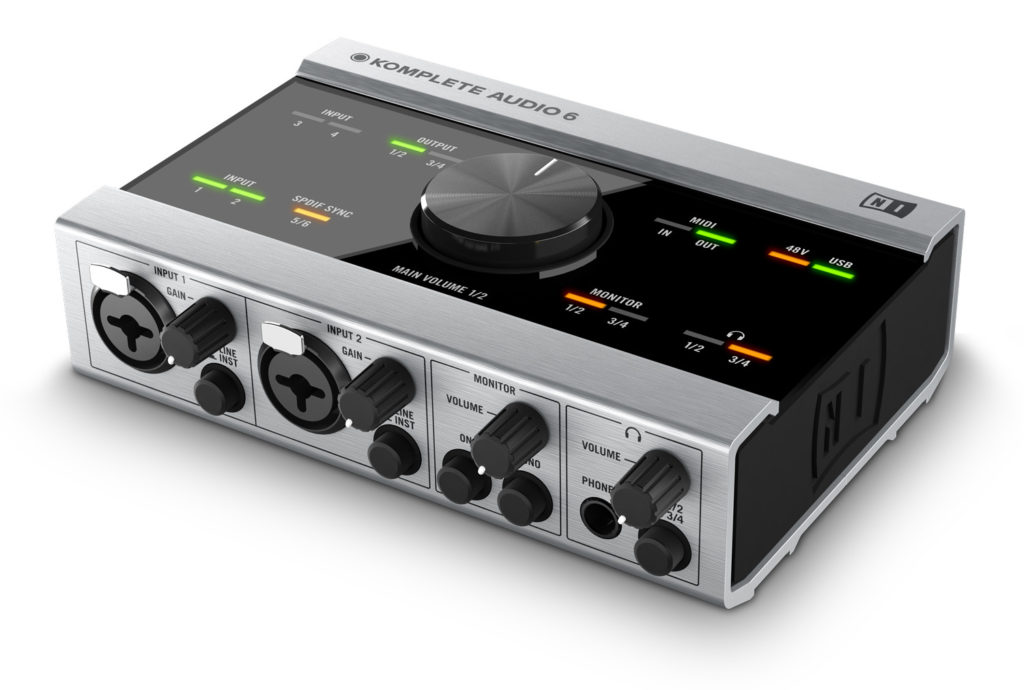
There are lots of benefits of using an audio interface. Here are some:
• Audio interfaces are perfect for ensuring that your computer has a heightened sonic capability.
• The devices are ideal for sound amplification, which is vital if all you are using the conventional audio recorder. In other words, they improve the sound quality of your PC or laptop.
• An audio interface can act as a sound card when connected to a computer.
• With this device, you can do multitask. The several inputs and outputs will allow you to make connections to drums, guitars, keyboards, and iPads among others.
• It offers you many options for connectivity including USB 2.0 and 3.0, FireWire, Thunderbolt, and Ethernet among others, all with different types of speed and bandwidths.
• They are the best for reducing noise and latency during production.
Best Audio Interfaces
Focusrite Scarlet 2i2 USB Audio Interface
Amateur or professional, the Focusrite Scarlet 2i2 USB Audio Interface is one of the most recommended audio interfaces. This device has two inputs and dual outputs USB recording interface. What makes it stand out from the rest is its preamps and precision digital conversion.
If you are a DIY enthusiast working with a laptop, for the superior sound quality, this particular product is your device. The USB interface is ideal for laptop environments. It comes with mic amps, direct monitor function, dual 2-pin, power USB, support for Windows and Mac OS systems among many more.
This model allows you to plug in the device and listen to music directly from the speakers. There are no delays. Latency is zero, and with the LED input gain indicators, all you can do is concentrate on your recording. It also comes with Ableton Live Lite software for additional and fantastic sound effects.
- Comes with a tactile control for volume on the monitor
- Ableton allows you to access or customize online recordings
- Easy to use for both beginners and advanced users
- Portable, no unnecessary power cables and has a good performance
- Some users cite the failure of the input lights after a while
PreSonus AudioBox iTwo 2×2 USB iPad Recording System
This device comes with award-winning recording software, the Capture Duo. It is a solid indoor performer with USB connections for Windows, Mac, and iPad. The PreSonus AudioBox iTwo audio interface system requires no power supply and is lightweight.
This audio interface gives you two combination inputs and a MIDI connection, which you can connect with your external synth to directly manage the synth on your iPad! It has everything and all the features you need for a successful project.
Apart from the Capture Duo, the purchase comes with a Studio One Artist DAW for laptops, virtual instruments and lots of plug-ins. With proper storage of loops and samples, you will be recording seamless music in no time.
PreSonus is famous for their Class-A preamps, this is a great way to start. It shows nothing but the best performance on the impression scale. It even has a mix knob! Its latency is spotless, and it offers precision without glitches. This should be your favorite if you prefer stability in your production projects.
- Has a spotless latency
- It is lightweight, durable, and performs great
- Comes with a mix knob, Capture Duo and Studio One Artist for online synchronization
- No built-in power button
- That it has a mono channel or no panning controls is frustrating to some
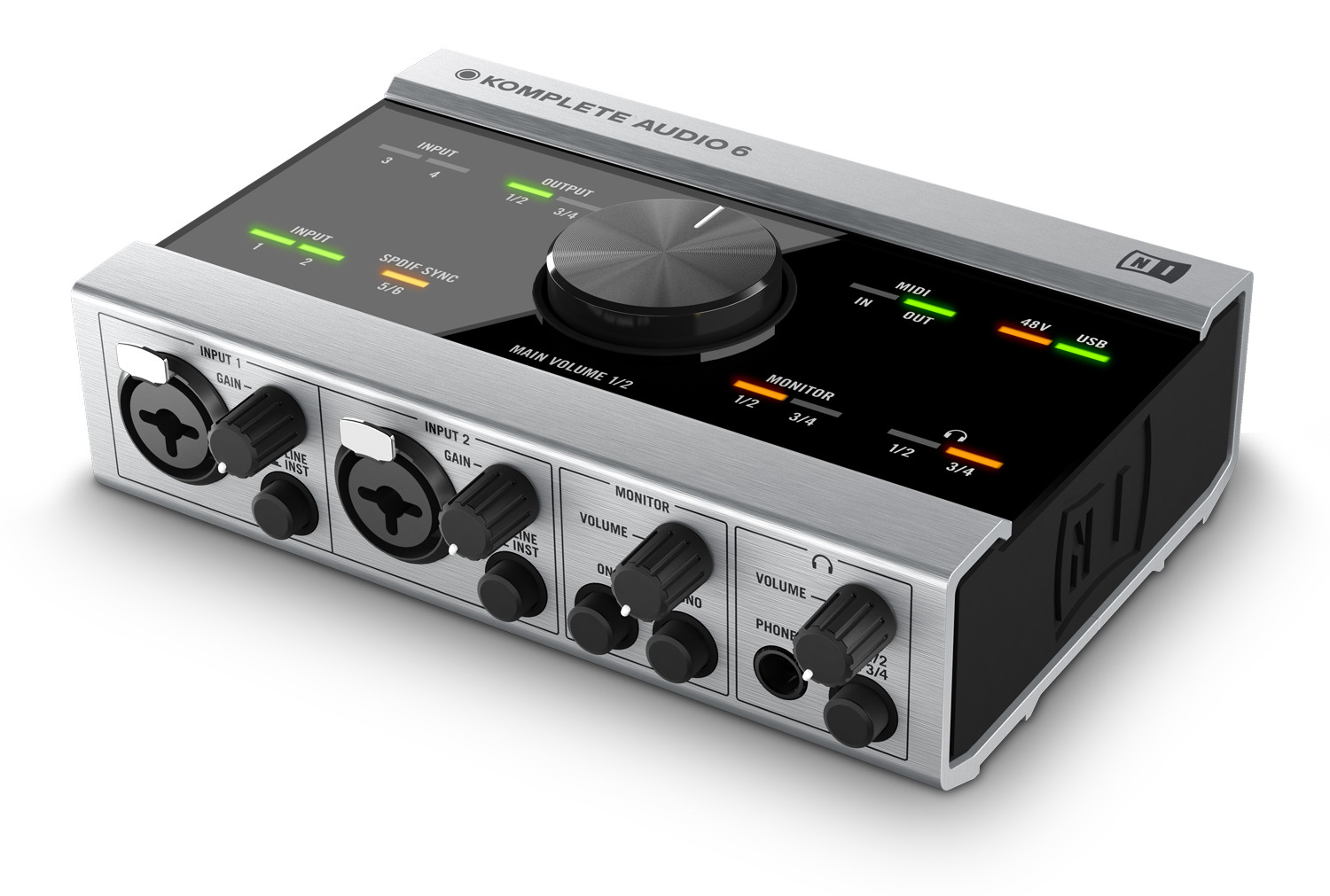
Native Instruments Komplete Audio 6
This is one heavy duty, high-end, small interface metallic device, which is a perfect partner for your PC or laptop. It is convenient and flexible for professionals and enthusiasts alike. The Native Instruments Komplete Audio 6 comes with 6 outputs and inputs functional without external power. The ins support quarter inches and jacks.
This audio interface is equipped with a software package that includes Traktor LE two and Cubase LE5. It also comes with Komplete Elements, which contain thousands of sample sounds taken from the systems seventh synth pack. Its sound is of high quality, full range, and with MIDI input for keyboards and any other MIDI controller. The response time contains no latency on the ins and outs. The audio runs seamlessly, no glitches, spikes or jumps on the meter.
Like other few devices on the market, this particular audio interface has LED monitor for visual feedback, and direct monitoring during a live recording. The mono input allows you to record vocals, guitars, and many more sources. With the pre-amps, the individual gain controls, headphone output at independent levels among other great features, make the Native Instruments Komplete Audio 6 an audio interface worth having.
- 15 status LEDs for visual monitoring
- Comes with Traktor LE 2 DJ software, 3GB of sounds and effects as well as the Cubase LE recording software and sequencer
- Quality is better than its other models, as some users site
- Other users complain that this audio interface is somewhat limiting and that other products within the same price range are better.
M-Audio M-Track Plus Interface
This is another audio interface for your home studio with a good value for money. It is a robust version regarding its build with an adequate supply of the ideal ins and outs. The device is USB powered and delivers a phantom power for other supported devices like guitars and microphones. It comes with jack ins for every channel.
The M-Audio M-Track Plus Interface features an included Avid Pro Tools Express and Ignite creation software by AIR. If you are scouting for one device that has a good combination, you shouldn’t pass this device. Everything else in unnecessary unless you are using it while recording several instruments at the same time.
It doesn’t have zero latency, but it sure is almost unnoticeable. Some users, however, point out that the audio interface preamps do not have enough gain. The MIDI controllers are great. Notably, the M-Audio M-Track Plus Interface works best with MAC OS. Some users have tried with windows, but it tends to get messy at some point.
- It is small, lightweight, and USB powered
- Flexible, convenient, and user-friendly
- Comes with Avid Pro Tools Express and Ignite by Air
- The best audio interface for beginners
- Not the best for advanced users
- Working with Windows is problematic
MOTU UltraLite-MK3
If you are searching for an audio interface with multiple connectors, the MOTU UltraLite-MK3 is another great you should consider. It features two types of connectivity, FireWire, and USB 2.0. while using FireWire, your computer will give your UltraLife everything it needs. The power data can be used while powering it with the USB connection.
MOTU UltraLite-MK3 comes with multiple inputs and outputs: two mic pre-amps, 6 TRS inputs as well as 10 more for the analog TRS outputs. It comes with a MIDI controller, a stereo for digital, and headphone outputs. The DSP routing and the inbuilt sound effects are an excellent addition to everything you need, for the best performance.
The device can double up as a mixer, a steady and an independent one for that matter. Included are onboard effects for fun without your PC or laptop. The sound quality is amazing, and you can record with no latency or strains on your computer.
- Housed in a rugged and compact, durable, lightweight enclosure
- Serves as a standalone mixer
- Powered by FireWire and USB
- Three frequency types
- Crisp and clear pre-amp
- It is quite messy for Windows users, especially when using FireWire
- No hi-tech sounds on the pre-amps
Conclusion
There are so many things to consider before buying the best audio interface. It doesn’t matter whether you are a beginner starting out on a new home studio project or upgrading an existing one, having the best device is mandatory. If the choice is overwhelming, the Focusrite Scarlet 2i2 USB Audio Interface is what you should go with. It has everything you need for excellent results including Ableton Live, USB powered, and has enough inputs and outputs for successful recording.
All in all, the information in this review and guide should be helpful in your quest to find an audio interface that meets all your needs.

